Bolivia Backpacking Itinerary: What I’d Do Differently Next Time

So you’re thinking of heading to Bolivia & want to build an itinerary that’s not just “highlights on a list” but something you’ll actually remember?
Been there. Ate the llama. Froze on the overnight bus. Made a few questionable calls. I travelled the country for a couple of months, bouncing between cities, chatting to other travellers & seeing how people were tackling it. And you know what kept coming up? That two weeks was the sweet spot – enough time to see the headliners, without totally wrecking yourself in the process.
This post is basically the Bolivia backpacking itinerary I wish I’d followed from the start (even with my slower travel) – complete with the bits I’d keep, the bits I’d tweak & a few curveballs worth dodging.
I’ve laid it out day-by-day with some options depending on how much time you’ve got. Think of it like a guide from your mate who’s already done the hard bit (like surviving altitude headaches in Potosí) so you don’t have to.
Full Disclosure: As an affiliate, if you book or buy through the links in this post, I may earn a small commission – at no extra cost to you. I’d still recommend them even if I wasn’t getting paid. Promise.
Quick Glance Itinerary (No Fluff)
Acclimatise, ride cable cars, do Death Road
Go full mirror mode or optical illusion sesh
Chill, explore the white city, eat well
Silver mine tour or skip to Santa Cruz
Mix up the altitude with tropics & markets
Wind down with views & Inca mythology
For specific tours to book vs wing, check out this Bolivia tour breakdown I put together
What is the best time to visit Bolivia?
Wondering when to go? Bolivia’s dry season (May–October) offers sunny days and chilly nights -ideal for the Salt Flats and mountain treks. The wet season (November–March) brings the mirror effect to Salar de Uyuni but can make some routes tricky. I went in April and caught the tail end of the mirror season – worth it for the photos alone
How Many Days Do You Need to Backpack Bolivia?
From my escapades and chats with fellow wanderers, two weeks hits the sweet spot. It gives you ample time to soak in the highlights without feeling rushed. If you’re tight on time, a 7-day whirlwind tour can cover the essentials, but be prepared for some long bus rides and quick stops. On the flip side, if you’ve got 3-4 weeks, you can delve deeper into off-the-beaten-path gems like Sajama National Park or the Amazon Basin.
What I’d Definitely Keep in My Route
La Paz + Death Road (Days 1–3)
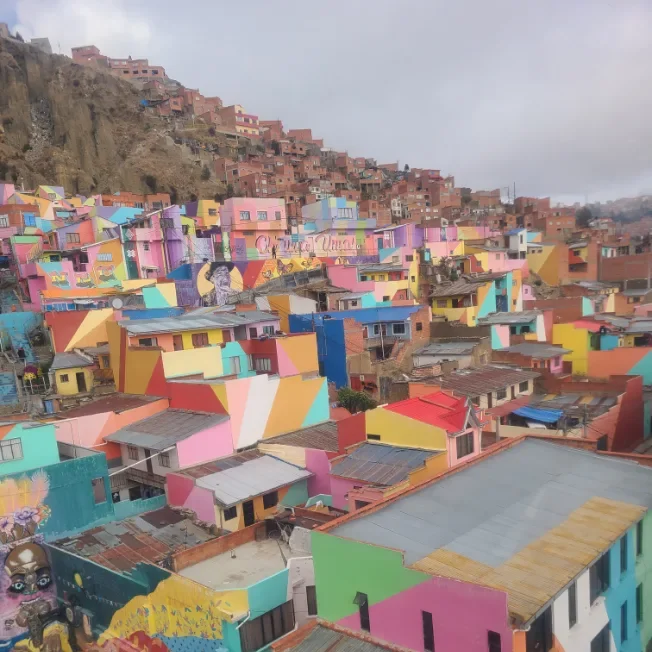
Start your trip in La Paz. Yes, it’s chaotic, yes, it’s built like a vertical maze, but it’s also madly addictive once you get your bearings. Your first 48 hours here should be about acclimatising to the altitude (3,650m high up), eating all the things & figuring out whether you’re up for biking Death Road (you are.)
Use day one to ride the Mi Teleférico cable cars, explore markets & get your blood-oxygen levels semi-functional. For those who want an all-in-one La Paz experience I also saw this tour advertised. I haven’t tried this one personally but I had a read through and it’s solid & well-reviewed!
Next, book your Death Road bike tour early – here’s my full guide to that & can safely say, it’s 70% adrenaline & 30% convincing yourself you’re fine.
I go into a lot more detail in my article above about who I went with for the tour and why, for ease I’ll be including a link to an option I know is good (after meeting people on this very tour at the break spot afterwards who loved it!)
Recommended tour link that does it all for you: Death Road Tour
Here’s my top hostel for La Paz too if you don’t have one planned already (caution – this hostel is more for partying & clocks in at a 9.2 rating at the time of writing), and this one is a good alternative for a more relaxed stay.
For the more hotel-oriented people Booking.com will meet all your needs. It’s such a standard catch-all option, but super solid for flexibility. I like to compare options when I do my accommo research and use it as a basis for prices etc.
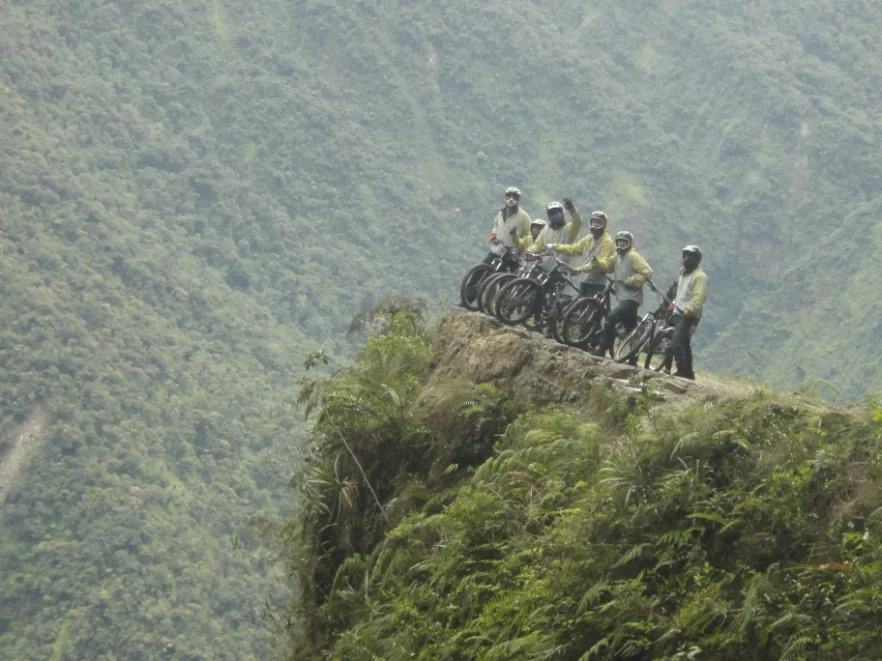
I’ve written more about how safe Bolivia really is if you’re wondering where the sketchy bits are – it’s not all cliff-edges, promise.
Uyuni & Salt Flats (Days 4–5)
Take a night bus or short flight from La Paz to Uyuni, then head out on a 1, 2 or 3 day tour across the salt flats, cactus islands & Altiplano Martian landscapes.
If it’s rainy season, the mirror effect is insane. If not, you’ll still get photos that bend the laws of physics & perspective.
These are the 3 tours I would go with depending on your requirements:
1 Day Tour – More of a taster but does the core stuff – salt flats with a sunset tour & lunch
2 Day Tour – Highlights featuring the Train Cemetery, Colchani & Incahuasi Island (cactus island)
3 Day Tour – All of the above but with the Red Lagoon & an English guide thrown in!
Have a look through, see which one’s you vibe more with and base your trip around that. Also remember these can be arranged in Uyuni itself, which is what I did. These are just tours that pass the test in relation to activities/ reviews & can be a huge time saver if booked in advance/ on a strict schedule.
While Bolivia offers breathtaking views, staying connected can be a challenge. Internet speeds and availability vary across regions. Before you go, it’s worth reading up on what to expect with internet in Bolivia.
Recommended gear for salt flats
Sunglasses I wish I had at the time and have bought since, these are also Carbonfree Certified unlike a lot of other brands. As you know I’m allllll about sustainability.
Also sustainable, this travel fleece sorts you out. The weather is all out of wack as you can see from my pictures. I’m wearing trackies and a tee/ jumper in what looks like tropical weather – don’t be fooled and pack with versatility in mind!
Away from clothing etc, this travel adaptor is probably my favourite travel accompaniment ever! Durable and works with all plugs. I found that some sockets could be a bit dodgy in Bolivia, so trialling with multiple types helped overcome situ’s like these.
If you’re unsure about the best time of year to visit the Salt Flats, this article will also have you covered!
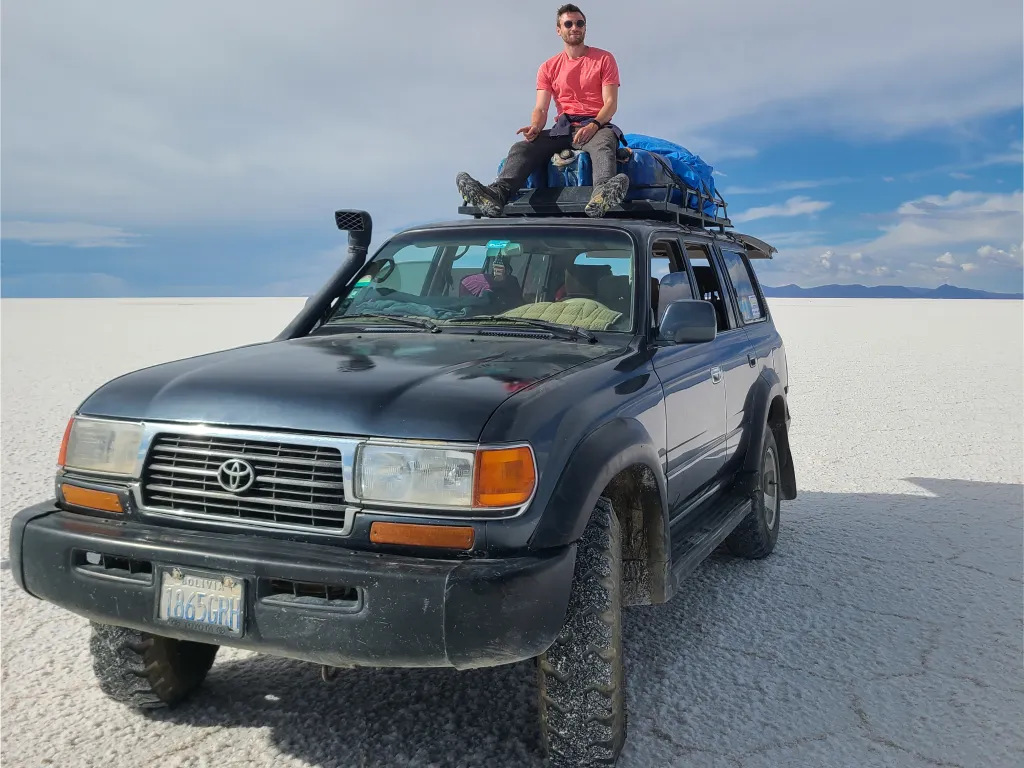
Sucre (Days 6–7)
An actual breather. Sucre’s all colonial buildings, cafes with courtyards & low-key vibes.
Here’s a tour link for the museums in the city. Have a click around and see which one’s you fancy, that particular tour is a bit on the spenny side so I’m using it more as a placeholder to give you some options dependent on your interests. Also check out the Museo del Tesero for a precious Bolivian stones experience!
There’s an abundance of hostels & hotels in Sucre, to give you a rough idea, here’s where I stayed in my time there (if you haven’t worked it out by now, I’m a bit more of a hostel person!)
It’s also a good place to relax and sample some of the Bolivia regional food!
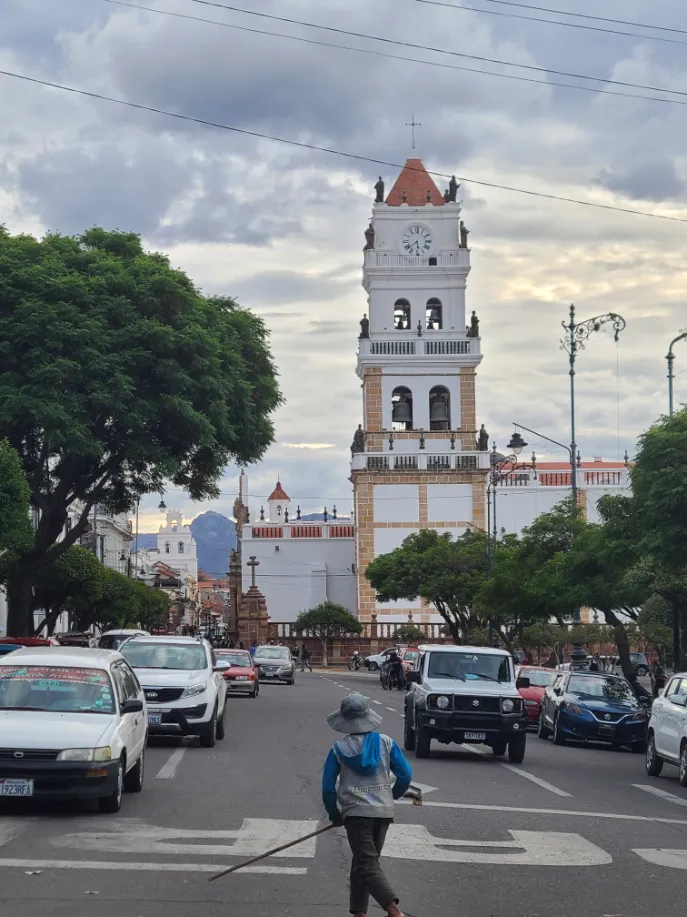
Santa Cruz de la Sierra (Days 8–9)
Wander palm-lined plazas, hit the Jardín Botánico, or head out to the Lomas de Arena. On that note there’s a really cool sandboarding experience for this too (and yes, it is basically a snowboard on sand – but incredibly fun).
This place I stayed at in Santa Cruz will also have you sorted for both tours & accommo (there’s also a pretty big clue in the name!)
Optional: Internal flight booking tip. A flight booking site like travelup can give you a much easier journey from La Paz to Santa Cruz. I’m me, so I took the 17 hour coach option (somewhat sweaty and grimy), so I can see how this wouldn’t be for everyone!
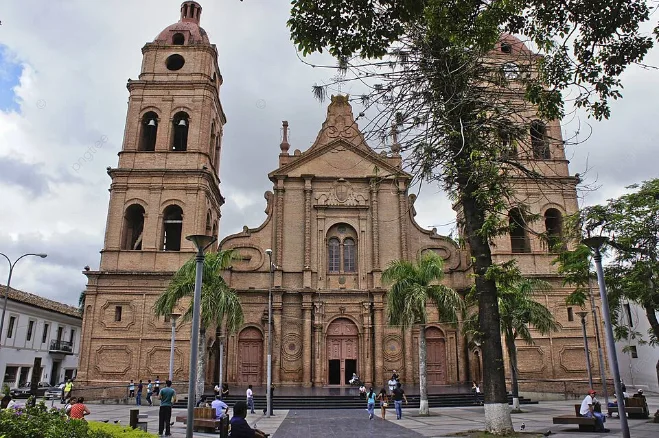
Potosí (Optional – Days 8–9 Alt Route)
Santa Cruz is a little out the way from what they call the highland circuit, which is why some people like to visit Potosí instead. It really cuts the travel time down as you can see from the Bolivia map below.
Book a tour of the silver mines here – preferably one that supports local guides.
I’ve realised that while writing this there’s a couple of adventure options already mentioned (especially Death Road), if you travel for extended period like me then a travel insurance option like Safetywing might also work well for you.
Lake Titicaca + Isla del Sol (Days 12–14)
There are a couple of ways you can mix this up – I did them both in one day so that’s what I’m recommending with this tour. It’s a full day covering both Copacabana & Isla Del Sol.
If you’re also wondering about accommo, here’s a cool stay option in Copacabana too!
One thing I didn’t realise until arriving was that Lake Titicaca is so big that it has a bunch of islands including Isla del Sol. What’s even cuter is that very close by is the Isla de la Luna. So you can visit both the Sun Island and Moon Island in one go! Make sure you find some time to get the famous pic from the start of the article too!
Also, properly understanding the unique landscapes of the Bolivian Altiplano can enrich your travel experience.
If you love these trivia tidbits as much as me here’s an article of my 10 favourite compiled Bolivia facts.
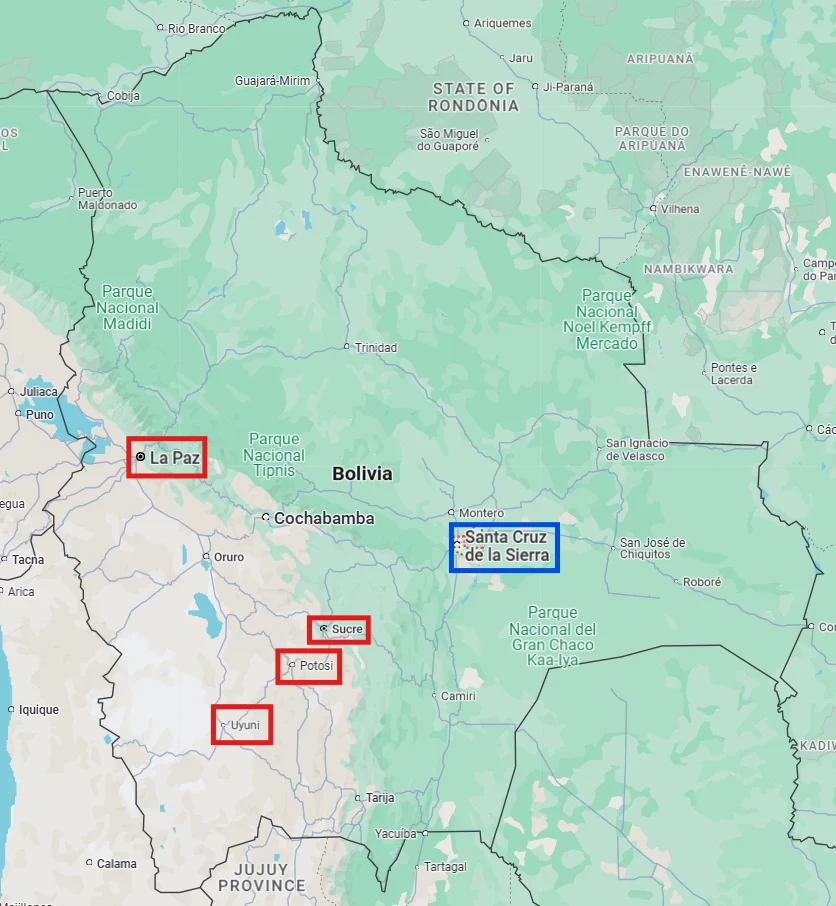
What should I pack for Bolivia?
Packing for Bolivia is all about layers. Days can be warm, but nights drop below freezing, especially in the highlands. I lived in my travel fleece (linked below!) and regretted not bringing better gloves. Also, don’t forget high SPF sunscreen (I went with 50 for my face) – the sun is fierce at altitude.
Not really my style, but might be yours!
I met loads of travellers doing the DIY route like I did – booking buses, bartering for tours & winging it a bit (honestly, half the fun). But some people I chatted to were on guided group trips & loved not having to plan a thing.
If you’re more into the idea of having it all sorted ahead of time, G Adventures actually offer a Bolivia tour that covers this whole route surprisingly closely – La Paz, Uyuni, Sucre, the lot. Not cheap, but it’s one of the more seamless options I’ve seen.
Check out the full itinerary here
My Bolivia Travel Tips (for Your Own Route)
Book Big Stuff in Advance, Wing the Rest
Links to:
Salt Flats Tour (3 days as that’s the one I did and the Red Lagoon is immense and shouldn’t be missed without good reason!)
Death Road Tour
Copacabana & Isla del Sol
Altitude Will Humble You
Links to:
Altitude meds – I find the mix with water one’s easiest, but there are also roll-ons and even patches. Whichever takes your fancy.
Hydration tablets – Not just useful for altitude, but all round, especially on v hot days!
Travel Insurance – Especially for nomads
How to deal with altitude sickness in Bolivia?
Altitude sickness is no joke here. La Paz as mentioned previously sits at 3,650m & Potosí is even higher. People have underestimated it and paid the price with a pounding headache and nausea. Coca tea helps, but I’d recommend acclimatising for a couple of days and considering altitude meds if you’re prone to it.
Layer Up. The Weather’s Mental
Links to:
Sunglasses
Travel Fleece
I don’t wanna spam this section with all my gear, as it’s a fair amount. The above two were what I found most useful with the sudden change of weather & blinding reflection from the oh so white salt flats!
If you would like more suggestions, then drop a comment below and I can do a bigger write up at some point if enough people are interested 🙂
Bring Cash (Crisp Notes Only)
As we know, money talks. And never more so than with cash. It’s useful at each of the above stops and great for bartering too.
For more info around this, check out my Is Bolivia a Poor Country and Is Bolivia a Cheap Place to Live articles.
Do I need a visa to travel to Bolivia?
Visa requirements vary. As a Brit, I got in visa-free for 90 days. Met some Americans who had to pay a fee and show extra documents. Always check the latest requirements before you go – rules can change faster than Bolivian weather
For more tips on preparing for your trip, including visa requirements and packing essentials, take a look at Bolivia Entry Requirements 2025. I’ve also got a quick breakdown of Bolivia’s visa situation if you’re not sure whether you’ll need one (or how awkward it gets for Americans). There are some subtle nuances between the two!
Apps I Used Constantly
- Maps.me – Apple & Play Store. I use this literally everywhere, not just Bolivia. Absolute gamechanger for offline maps.
- SpanishDict – Apple & Play Store. There’s also a website with endless Spanish resources.
- Booking.com – Great for so many booking-related things!
💬 P.S.
If you’re still piecing together your trip & want a more detailed breakdown of Bolivia’s weird, wonderful highlights – check out my full Bolivia travel guide here. It’s got all the deep dives I couldn’t fit into one post.
Complete Package
An option that covers all the main stuff.
Again, not so much my go-to, but I know a lot of people prefer a stress-free start to finish option like this.
Is Bolivia safe for backpackers?
Safety-wise, Bolivia felt generally safe during my travels. Like anywhere, keep your wits about you, especially in crowded markets or on overnight buses. I had a close call with a dodgy taxi in La Paz – lesson learned: stick to registered cabs or ride-sharing apps where available.

Final Thoughts
As you may have picked up across the article, I’m more of a combo of the two main types of traveller. I like to book the most important things in advance and save myself time on the day, but also keep the costs down through staying in hostels and paying for some things with cash to get a discount.
After more than 2 months in Bolivia, a tip I can’t understate enough is doing as much research before you go to make everything as smooth as possible. A great place for that which has got the deep dives, the random trivia & all the bits I had to cut from this post can be found in the full Bolivian guide here.
I sincerely hope I have given you enough options to plan your own epic adventure, in your own style, just the way you like it! As always, I am open to feedback and recommendations so I can keep on improving this article and my content overall.
If this helped map out your trip, or you’ve got your own tips to share, drop them in the comments below. I read every single one (even the weird ones).
If you’ve done a Bolivia backpacking trip & have your own route tips or wild travel fails, bosh ’em in the comments – I’ll feature some of the best ones! 🙂
Happy Travels!


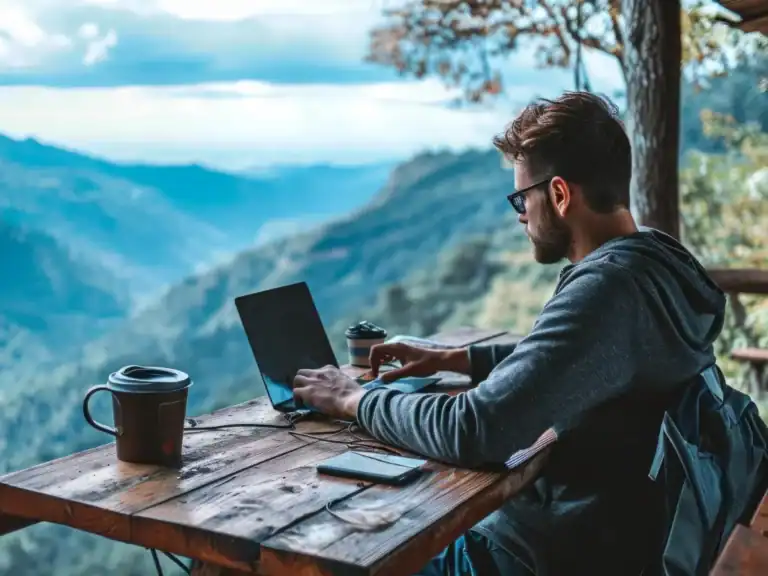

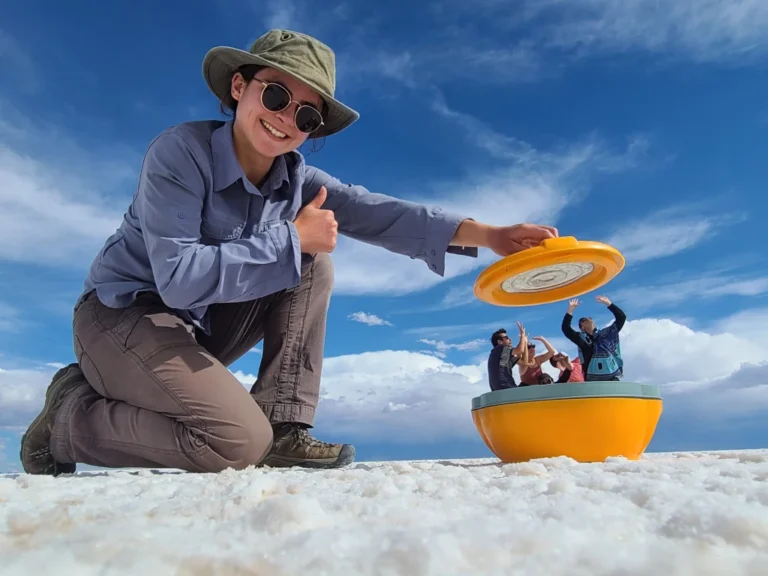
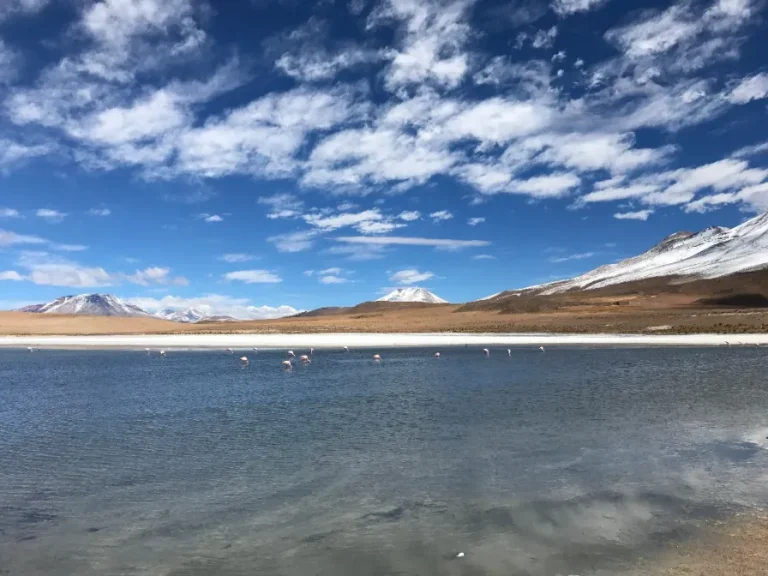
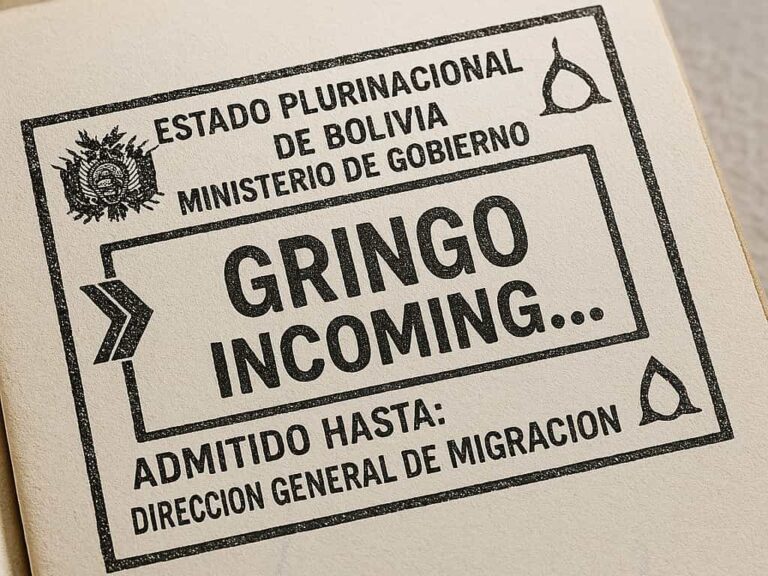
Smashing article!